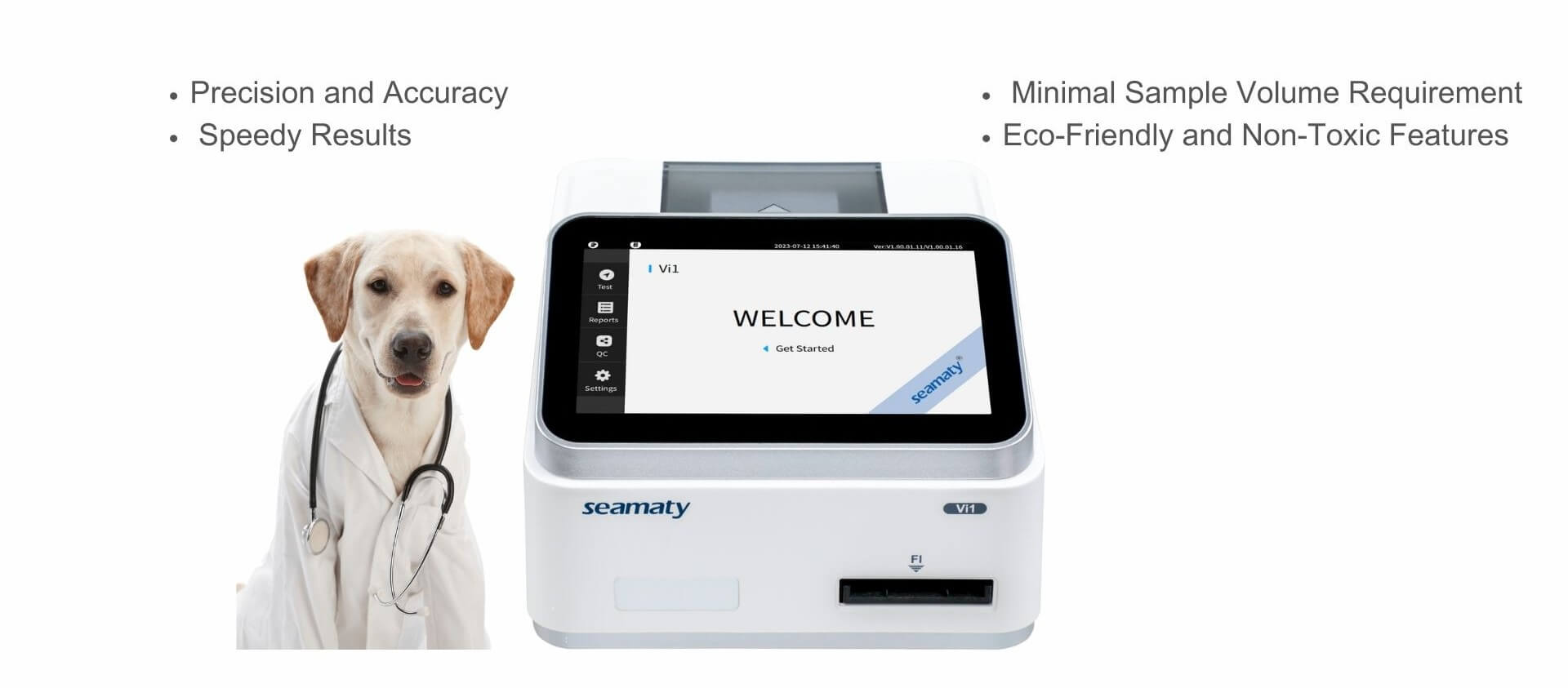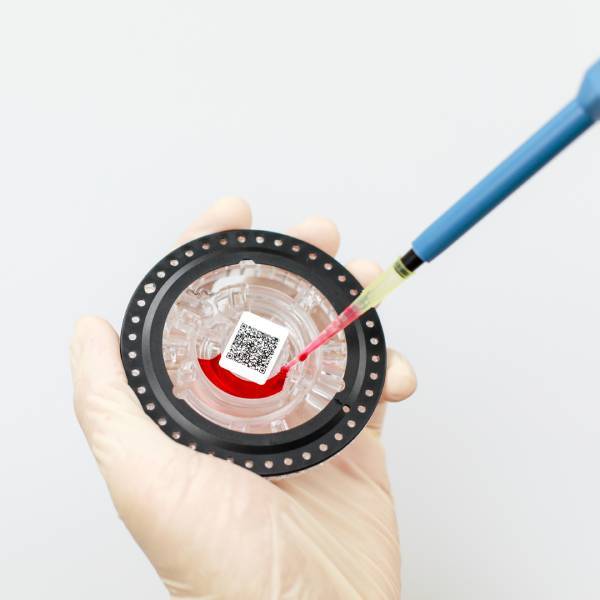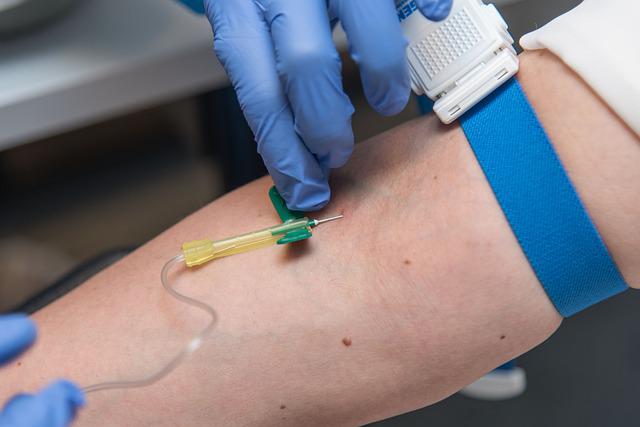release time:2023-11-23 16:44:43
Veterinary immunoassay analyzers play a pivotal role in providing accurate and timely results, significantly impacting the well-being of our furry companions. In this blog post, we'll delve into four compelling reasons why integrating an automated veterinary immunoassay analyzer, such as the Seamaty Vi1 Veterinary Fluorescence Immunoassay Analyzer, into your practice is a game-changer.

In the realm of veterinary diagnostics, precision is paramount. Seamaty Vi1 distinguishes itself by incorporating rare-earth nanocrystals, an innovation that augments stability and eradicates interference. This translates to unparalleled accuracy in diagnostic outcomes, empowering veterinarians to make informed decisions with confidence, ultimately enhancing patient care.
Time is of the essence in veterinary practice. Seamaty Vi1 addresses this need by providing rapid results within 4-10 minutes, a significant advancement over traditional methods. This expeditious turnaround time proves particularly advantageous in emergency scenarios, allowing for prompt decision-making and timely interventions.
Efficiency in sample collection is a key consideration in veterinary diagnostics. Seamaty Vi1 distinguishes itself by requiring a minimal sample volume of only 0.1ml. This feature not only minimizes stress for the animals but also streamlines the diagnostic process for practitioners, particularly in instances where repeated testing is necessary or with small-sized or sensitive animals.
In addition to its diagnostic prowess, Seamaty Vi1 upholds environmental responsibility. The integration of rare-earth nanocrystals not only enhances diagnostic precision but also establishes a foundation of eco-friendliness and non-toxicity. This commitment aligns with contemporary values of sustainability, ensuring a safer working environment for veterinary professionals while contributing to broader environmental conservation efforts.
In conclusion, the Seamaty Vi1 Veterinary Fluorescence Immunoassay Analyzer emerges as a transformative tool in the realm of veterinary diagnostics. Its precision, speedy results, minimal sample volume requirement, and eco-friendly features collectively make it an invaluable asset for veterinary professionals. By adopting such advanced technologies, veterinarians can enhance the quality of care they provide, ensuring the well-being of their animal patients while contributing to a more sustainable and ethical practice. As the landscape of veterinary medicine evolves, embracing innovations like the Seamaty Vi1 becomes not just a choice but a necessity for those committed to delivering optimal healthcare outcomes.

2022-10-11
1. General biochemical tests are performed by collecting venous blood in the morning on an empty stomach. Fast for 8-12 hours prior to blood collection. 2. For items requiring non-anticoagulant blood, take the prescribed amount of blood into a clean, dry tube. Allow the blood to clot at room temperature and then separate the serum.

2021-12-24
When you have a biochemical blood test, you have to draw blood. However, bruising often occurs on the arm after blood is drawn, do you know why? Most of the reasons for bruising at the arm after a blood draw are caused by improper pressure to stop bleeding after puncture. The following are 5 common causes.

2021-12-17
The liver, located at the diaphragm, is one of the most important organs in the abdominal cavity. It plays a vital role in maintaining the normal functioning and metabolism of the body, such as 1. aiding digestion (metabolism of fats) 2. synthesis of proteins and hormones.